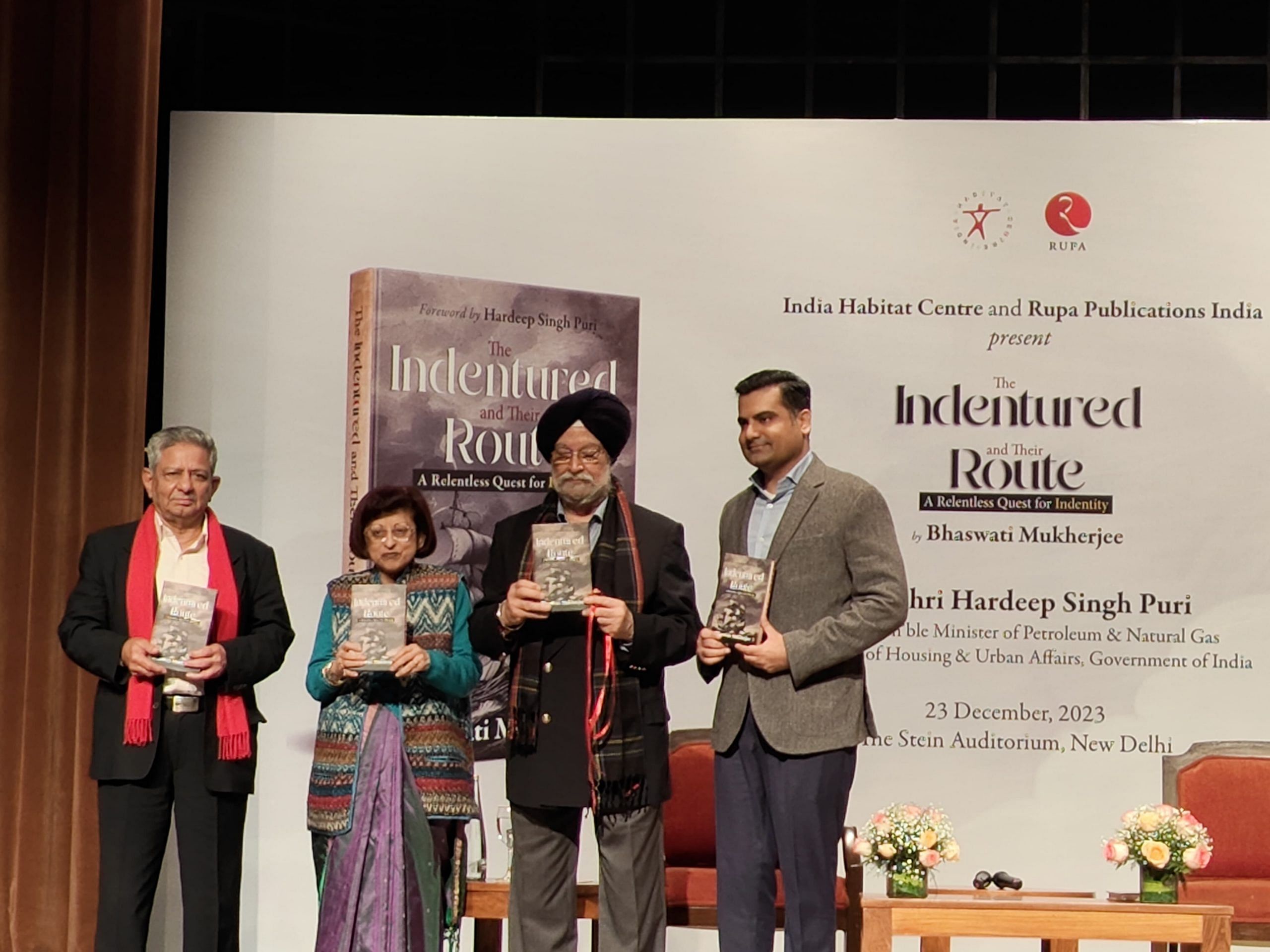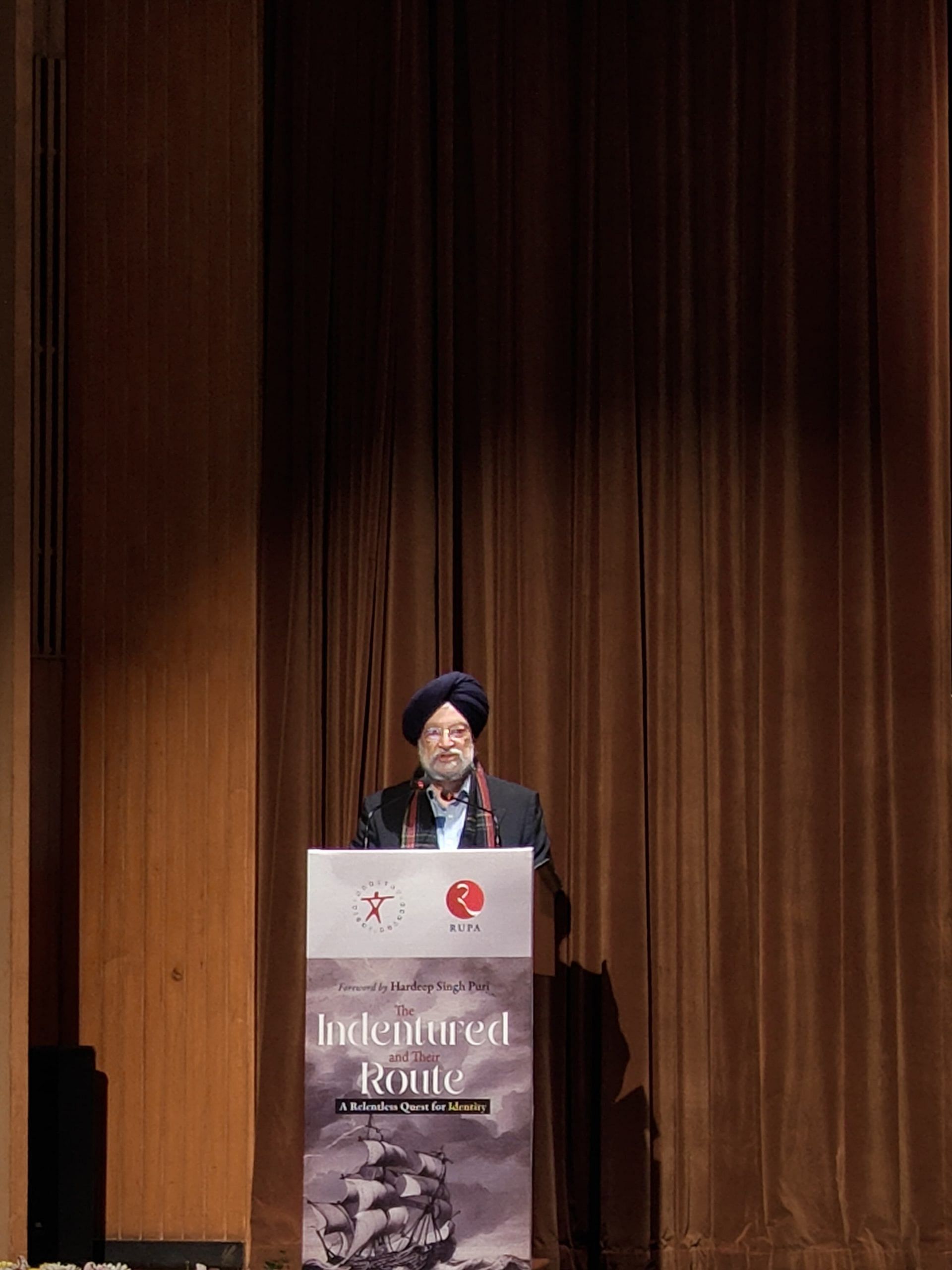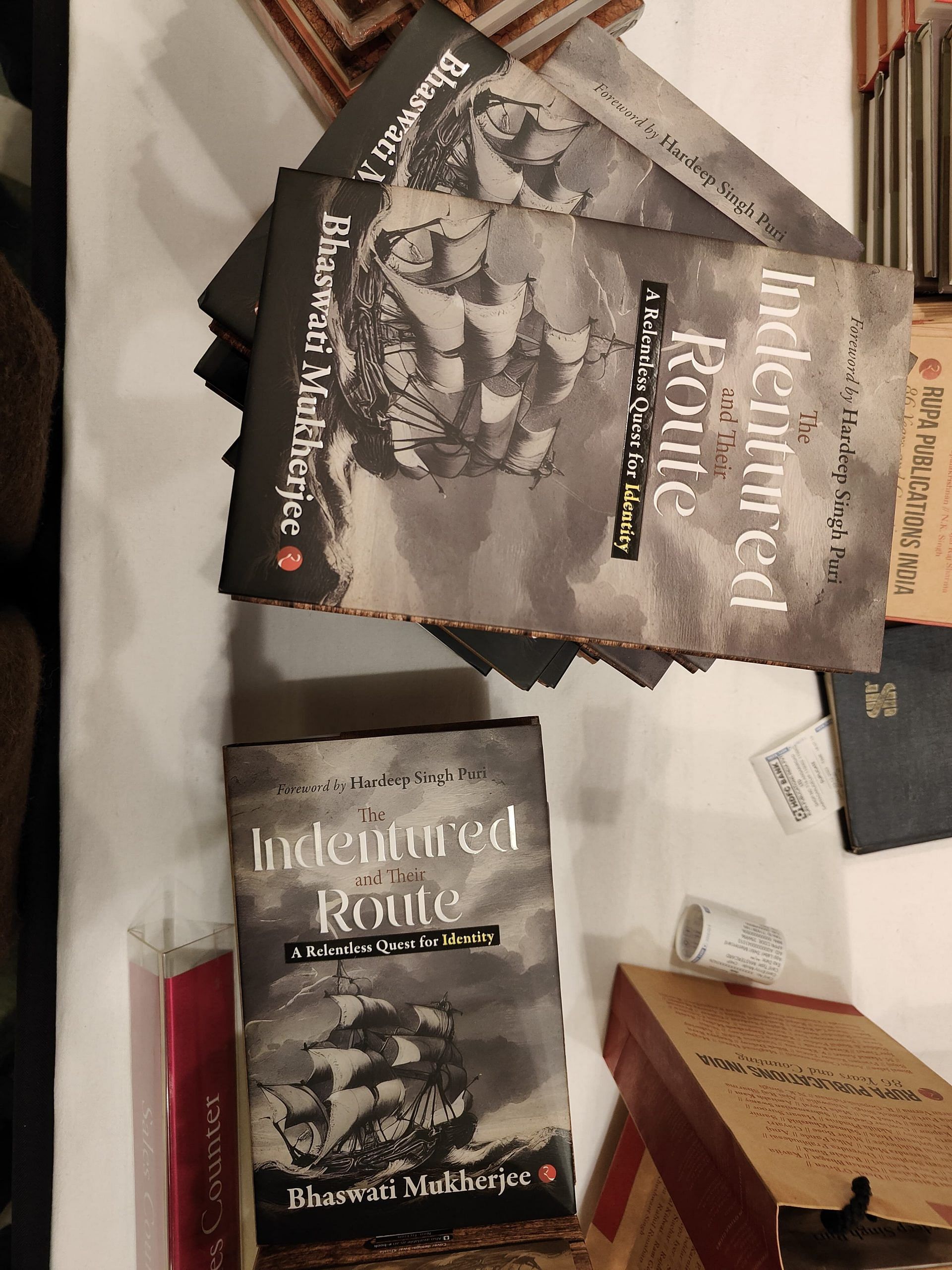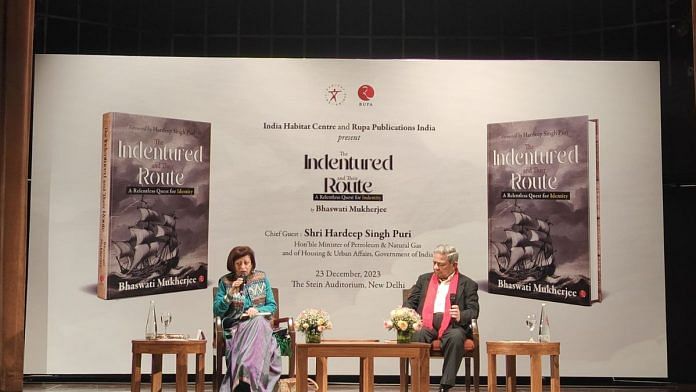The British abolished slavery in 1833. But what was supposed to give birth to a free society instead led to another, ‘more refined’ form of slavery—indenture. The first ship carrying Indian immigrants from Kolkata arrived at the Caribbean Island of Trinidad on 30 May 1845. It marked an important turning point in history.
Over the years, 1.5 million Indians were transported in such ships to Mauritius and other countries to work in sugar and indigo plantations.
In the last month of 2023, former Indian ambassador and president of the India Habitat Centre (IHC), Bhaswati Mukherjee launched her fourth book The Indentured and their Route, which takes a look at the ‘great experiment’ of the British and the experiences of the Indian indentured workers.
The Stein Auditorium of the IHC in New Delhi witnessed a room full of foreign diplomats, journalists, and scholars–all gathered to learn how Indians were separated from their land and subjected to a form of bonded labour from which they never returned.
“The Indians struggled to cling to their identity while being transported to foreign lands. They tried to keep their culture alive by reminiscing past moments through language, poetry, music and religion,” Mukherjee explained while talking about the quest of indentured Indians to keep their culture alive.
As slavery was abolished, more than 4,62,000 people arrived in Mauritius to start a new life between 1830 and 1910. It was the first site in the world for such large-scale immigration. The workers came from China, the Comoros, India, Madagascar, Mozambique, Southeast Asia, and Yemen.

Also read: When George Bush ‘behaved like a little boy’ with Atal Bihari Vajpayee
Indenture vs slavery
Mukherjee’s book traces the extensive migration of Indians. “Indenture’s origin was rooted in the abolition of slavery,” Mukherjee notes in the first chapter of her book.
An indenture is a formal contract of work between an employer and employee, involving either fixed wages or the employee working without pay in exchange for a waiver of any monetary dues or loans.
The marginalised people were made to sign ‘girmits’ or agreements. Most of these labourers didn’t know how to read and write and were unaware of the terms of employment. But they still had to leave their thumb impressions on pieces of paper, giving away their freedom.
In the 19th and early 20th centuries, Indians were forced to work on colonial sugar, rubber, tea, and cocoa plantations. By the time indenture was outlawed in 1917, it had already extended from Mauritius and the Caribbean to Fiji, Malaysia, Sri Lanka, South Africa, and other countries.
The author mentioned that most of these workers were tricked into boarding the ships under the pretence that they were being taken to Tapas Island near West Bengal. The slavery ships were loaded again, this time with people without the chains.
The repeated famines, droughts, and increasing taxation by the East India Company also led to the gradual impoverishment of India’s eastern states. People wanted to escape the misery and the chance to travel to a foreign land because work gave them hope of a better life.
“After losing in the Battle of Plassey in 1757, colonial forces took over India and colonial politics was everywhere. It resulted in a number of disasters including The Great Bengal Famine of 1770, which killed approximately 10 million people,” explained the former ambassador.
Mukherjee added that the book was a necessity to address the ghosts of the past.
Also read: The next battleground is OTT. Sadhus and preachers take a vow to make India ‘morally pure’
The quest for identity
In her book, Mukherjee describes the ship travellers from India as jahaji bhais and jahaji behens.
Addressing a captivated audience, Mukherjee presented some anecdotes from her book.
Indians who were stationed in Mauritius or deported to farther lands weren’t allowed to speak in their local language. They couldn’t practice their religion. It was as if their entire past life was being erased.
While some followed the rules of the labour camps, some tried to keep their culture alive in secrecy. The travellers would sing folk songs to celebrate their identity.
The women, Mukherjee marked, played an important role in it. Being majorly deployed in domestic work, the women passed on a cultural legacy to the future generations through stories and music.
However, they were also the worst sufferers of the indenture system. Women in camps, especially single women, were termed prostitutes and immoral. They were subjected to physical and sexual abuse.
To save themselves from such miserable conditions, women often signed up for ‘depot marriages’—a system where single women migrants married male ones at the camps. Entering such a marital alliance implied that women would have no voice or decision-making power as wives.
“In Mauritius, Hindus comprise 52 per cent of the population. Bhojpuri and Hindi are recognised as the ancestral languages of Hindus there. Out of the steady flow of Indians into Fiji, about 80 per cent were from Uttar Pradesh, and others from Bihar and Bengal,” noted Hardeep Singh Puri, Minister of Petroleum and Natural Gas, and Housing and Urban Affairs, at the book launch. He also wrote the foreword of the book.
Puri added that countries like Mauritius and Fiji drew large influence from Indian immigration between 1830 and 1910. As time progressed, both countries saw several political leaders of Indian origin.

The case of Apravasi Ghat
The first site where the indentured labourers were taken to was Aapravasi Ghat in Mauritius, ever to be settled there or further relocated to other service countries.
As part of the ‘great experiment’, the indentured workers were expected to spend two-three days at this site. “Aapravasi Ghat became home to many of these indentured workers. It speaks of great history and has records of the struggles that the workers went through,” said Mukherjee.
In 2006, the Aapravasi Ghat was classified as a UNESCO World Heritage Site by. It was called an architectural ensemble that signified the start of the new economic order.

Also read: Fear, riots, but no ‘Muslim victimhood’— launch of ‘City on Fire’ puts Aligarh in spotlight
The Indian diaspora
The former Minister of Arts and Culture of Mauritius, Mookhesswur Choonee’s family history is tied to the ‘great experiment’.
His Indian great-grandparents contracted cholera during the voyage to Mauritius and were thrown off board into the ocean. The other travellers left on the ship named their son ‘Choonee Moonee’ during the registration at Aapravasi Ghat. That is how the family inherited the surname Choonee, Mukherjee said.
“The quest for identity continues…when it is denied, it results in conflict and war. When it is not denied because they didn’t allow it, it flourishes into the great Indian diaspora,” said the author.
Indians in the indentured camps soon realised that to live a better life, they had to gain political power. Today, up to 1.22 million Mauritians, or 68 per cent of the national population, have Indian ancestry and are called Indo-Mauritians.
“The indentured need to realise and accept what they are and what they are not. Only then would the relentless quest for identity find its end,” the author said.
(Edited by Ratan Priya)




Why is he saying that in English? Why can’t he say that in Sanskrit?
My maternal grandfather was such one of the slave who was put on a boat under the pretense of showing him around. The boat set sail and he didn’t know what was happening. He was only 14 and couldn’t read or write. When we were young we tried to trace his family but he didn’t even know his address or name of the village. So my regret is that we never found his family who didn’t know what had happened to their little boy. He Landed in Mauritius and worked in the sugar cane fields. It saddens me not knowing where my grandfather came from and knowing how much he missed his family and couldn’t do anything about it.